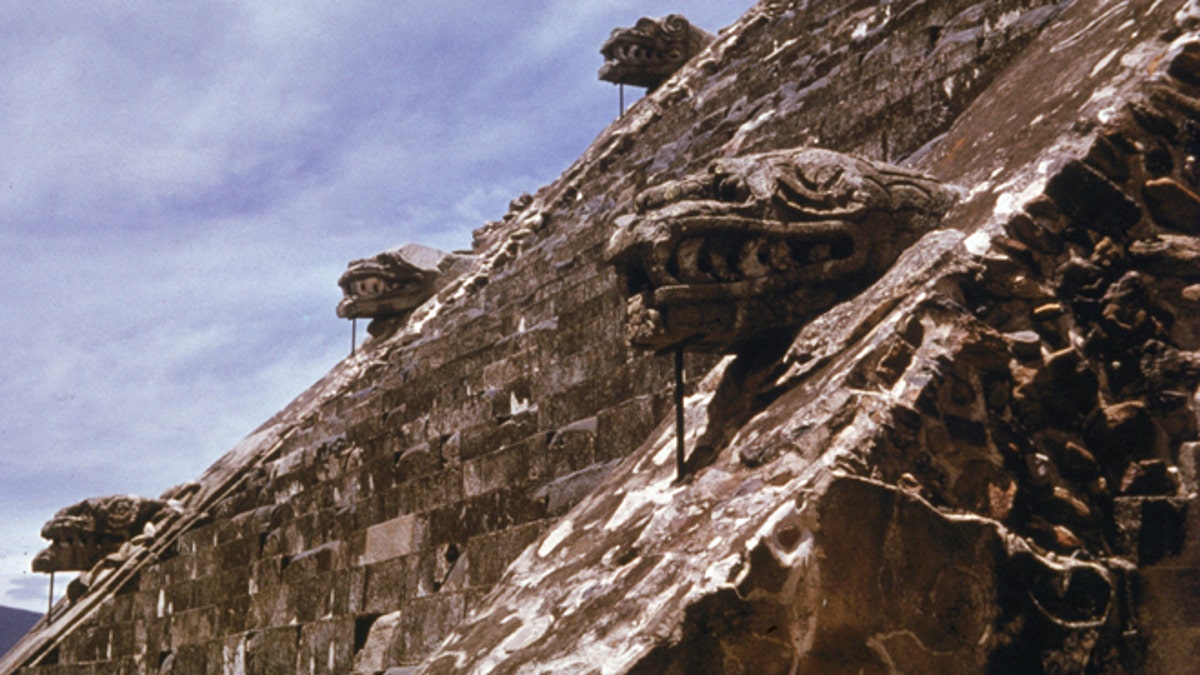
Detail of figures on the Temple of Quetzalcoatl at Teotihuacan, near Mexico City, Mexico, c. 1980. (2003 Getty Images)
A tiny, mud-splattered robot helped the past meet the future in Mexico.
The 3-foot-long robot known as Tlaloc II-TC aided archeologists working in Mexico’s Temple of Quetzalcoatl, at the archaeological site of Teotihuacan, make substantial discovery. Using Tlaloc II-TC’s video camera and ability to wedge itself into tight spaces, the scientists from Mexico’s National Institute of Anthropology and History discovered three new chambers purportedly used by Aztec leaders roughly 2,000 years ago for royal ceremonies or burials.
Teotihuacan was a pre-Columbian city and is located 30 miles northeast of modern day Mexico City.
"We managed to generate a series of images that allowed us to tentatively understand what is the configuration of the space at the end of the tunnel; and it seems that there’s not just one, as we predicted with Georadar, but three chambers," Sergio Gómez, the team’s leader told the Mexican newspaper El Universal.
The configuration of this space appears to be similar to the tunnel that runs beneath the Aztec Pyramid of the Sun, where there are four chambers that were explored in the 1970s.
"We have to correctly process the information, make much finer scans and measurements to see what it actually is," Gómez added.
The current exploration is a follow up to a 2010 project conducted by Tlaloc II-TC's predecessor, Tlaloc I. The name Tlaloc is the name of the Aztec’s god of rain.
Archeologists have also made progress in the Valley of Oaxaca, in southern Mexico, where they have unearthed signs of a specialized hierarchy of priests that may have been involved in human sacrifice.
Work has been going on at the El Palenque site since 1997, but archeologists only recently came across a large complex of buildings on the east side of the site. While evidence that priests sacrificed people is far from certain, researchers did find a human tooth, part of what may be a human limb bone and obsidian blades.
The temple dates back to around 300 B.C., when the Zapotec civilization inhabited the area in what is now the state of Oaxaca.
Follow us on twitter.com/foxnewslatino
Like us at facebook.com/foxnewslatino
